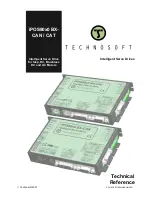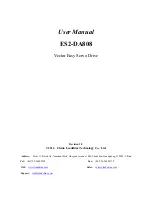
30
4.5 SEQUENCE OF OPERATION
4.5.1 COOLING & HEAT PUMP HEATING MODES
When the 2-stage thermostat calls for 1st stage of cooling or heat pump heating and
the thermostat fan setting is set to the AUTO position, the G signal from the thermostat
causes the Variabe Frequency Drive (VFD) to ramp the motor to the low speed air-flow
level (37.5 Hz) which is 63% of full air-flow. If the thermostat fan setting is set on the ON
position (continuos fan), the motor will already be operating at the low speed air-flow
level when there is a call for 1st stage cooling or heat pump heating.
If the 2-stage thermostat calls for 2nd stage of cooling or heat pump heating, the Y sig-
nal from the thermostat will cause the VFD to ramp the motor to the high speed air-flow
level (60 Hz). As the thermostat cycles between stages, the VFD and motor will cycle
between the low and high speed air-flow levels.
When the call cooling or heat pump heating at the thermostat is satisfied or the thermo-
stat is turned to the OFF position, the VFD will ramp down to 0 Hz and the motor will
stop if the thermostat fan settings is set to AUTO position. If the thermostat fan setting is
set to the ON position (continuos fan), the VFD will continue to drive the motor at the low
speed level (37.5 Hz).
4.5.2 ELECTRIC HEAT MODE
When the thermostat calls for the 1st stage of heat, the 1st stage heater contactor (HC1)
in the electric heater kit closes which energizes the 1st stage heater elements. If the
thermostat fan setting is set to the AUTO position, the G signal from the thermostat
causes the VFD to ramp the motor up to the high speed air-flow level (60Hz). If the ther-
mostat fan setting is set to the ON (continuous fan) position, then the VFD will ramp the
motor from low speed air-flow (37.5 Hz) to high speed air-flow (60Hz).
If the thermostat calls for the 2nd stage of heat, the 2nd stage heater contactor (HC2) in
the electric heater kit closes which energizes the 2nd stage heater elements. The heater
will then cycle between the 1st and 2nd stages of heat at the direction of the thermostat.
When the call for heat at the thermostat is satisfied or the thermostat is turned to the
OFF position, the heater contactor(s) open and de-energize the electric heater ele-
ments. If the thermostat fan setting is set to the AUTO position, the VFD will ramp down
to 0 Hz and the motor will stop. If the thermostat fan setting is set to the ON (continuous
fan) position, the VFD will ramp down to the low speed air-flow level (37.5 Hz) until the
next call for electric heat.
4.5.3 SUPPLEMENTAL HEATING DURING THE HEAT PUMP
HEATING & DEFROST MODES
Should the room temperature continue to fall when the system is operating in the heat
pump heating mode, the thermostat will energize supplemental electric heat as required
if an electric heater kit has been installed.
If the purple pigtail connected to the “D” terminal on the outdoor unit defrost control is con-
nected to the W1 input (black pigtail) on the electric heater kit, the 1st stage of electric heat
will be energized during the defrost cycle. This prevents cold air from being discharged
from the supply registers during the defrost cycle. For the most economical operation when
discharge air temperature during defrost is not an issue, do not make this connection.
4.5.4 EMERGENCY HEAT (HEAT PUMP)
If heat pump thermostat is set to the “Emergency Heat” mode, the outdoor unit will be
prevented from operating and heat will be provided solely by the electric heater. The
electric heater elements and indoor blower motor will be energized any time there is
a call for heat with no compressor and outdoor fan operation. A jumper should be
installed between the W1 and E terminals on the thermostat sub-base so a call for
emergency heat will be transferred to the 1st stage of heat of the thermostat. The indoor
blower will cycle on and off with the electric heater elements when the thermostat fan
setting is set to the “auto” mode.
4.5.5 THERMOSTAT FAN SETTING
If the thermostat “FAN” setting is adjusted to the “AUTO” position, the indoor blower
motor will only operate when there is a call for cooling or heating. If the setting is adjust-
ed to the “ON” position, the indoor blower motor will operate continuously at the low
speed air-flow level.











































